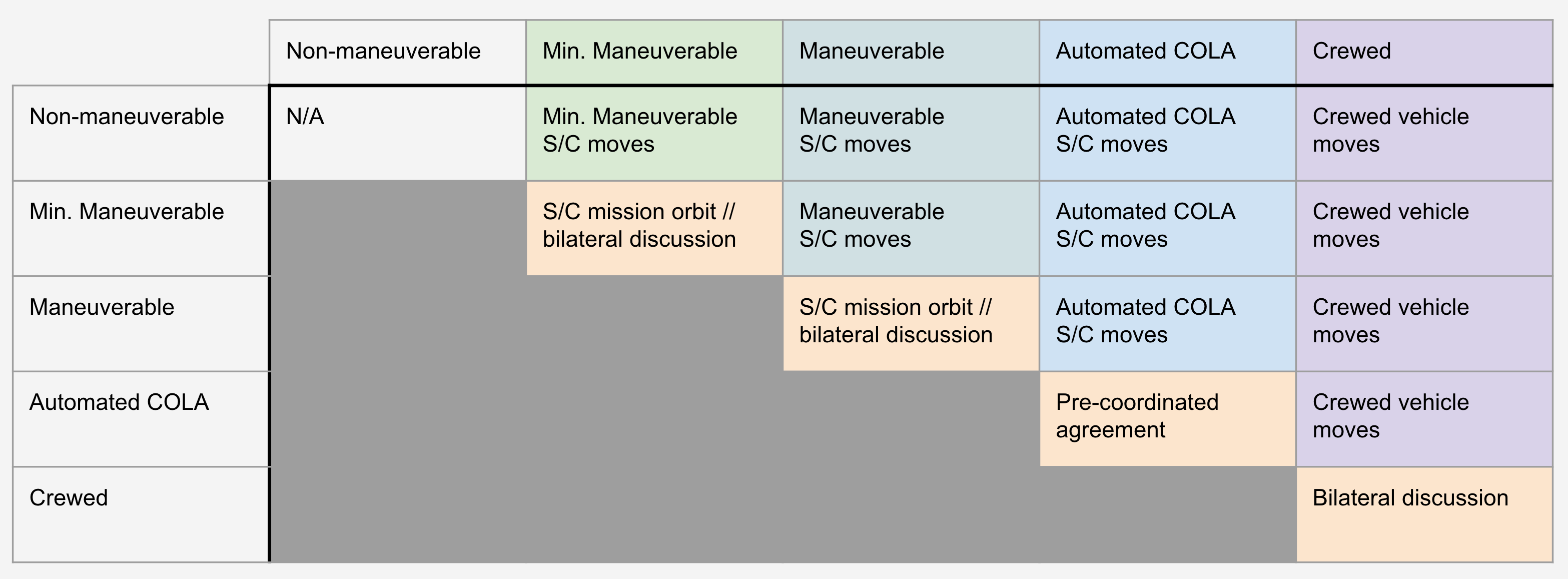Space Traffic Coordination
As more satellites become active in orbit, space traffic coordination (STC) becomes essential to reduce collision risk between maneuverable spacecraft. Kayhan Space was the first to develop an operational STC framework that enables operators to coordinate directly during conjunction events.
Satcat provides tools for signaling maneuver intent, assigning responsibility, and preventing conflicting actions between operators. These features are built into the conjunction workflow, so coordination happens where decisions are made.
From Management to Coordination
While Space Traffic Management (STM) frameworks define broad responsibilities, they do not provide a process for coordinating avoidance maneuvers. Most operators still act independently, even during high-risk events involving another active spacecraft.
With growing constellations and shared orbital regimes, that model is no longer sufficient. Operators must be able to communicate intent and understand the posture of the other party.
Coordination Features in Satcat
Satcat's coordination system is based on guidelines from the Space Safety Coalition (SSC), and operationalized through Satcat’s Rules of the Road.
Key coordination features in Satcat include:
-
Maneuver Responsibility Assignment
Satcat assigns responsibility based on SSC maneuverability categories, indicating which operator is expected to take action. -
Intent Declaration via Ephemeris Metadata
Operators communicate maneuver posture by uploading ephemeris with structured context tags (e.g.,COLA,ROUTINE). -
Asynchronous Operator Coordination
Coordination is designed to occur with or without real-time interaction. Each operator can review, respond, and update their intent independently.
SSC Maneuverability Categories
The SSC defines maneuverability classes to support fair, consistent responsibility assignment:
| Maneuverability Category | Description |
|---|---|
| Non-maneuverable | Total inability to effect flight safety relevant orbital changes |
| Minimal | Only able to perturb one's orbit to a very small degree |
| Manual | Able to easily alter one's orbit within a short reaction time |
| Automated COLA | Maneuvering decisions are made without human intervention |
| Crewed spacecraft | A spacecraft with inhabitants that are able to alter their orbit |
| Undetermined | The spacecraft maneuverability is not known |

If both spacecraft have the same category, bilateral coordination is required.
For related details, see: